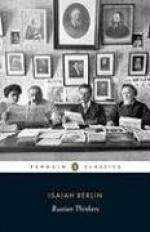|
This section contains 1,627 words (approx. 5 pages at 400 words per page) |

|
St. Petersburg
In nineteenth century Russia, St. Petersburg was the center of Russian court life. It had been founded by Tsar Peter the Great as a "window on the West," to help re-orient Russian nobles to Western ways. Renamed Petrograd and then Leningrad after the Russian Revolution of 1917, it was given back its old name after the fall of Communism in 1989. It is a port city on the Neva River, connecting to the Gulf of Finland.
Slavophilism / pan-Slavism
Slavophilism, founded in nineteenth-century Russia, was a broad movement, or group of movements, with both "right" and "left" wings. All its wings shared a love of Russian language and literature and the traditions of Russian peasants and a suspicion of Western rationalism, industry and middle-class values. The movement acted as a counterweight to the sense of inferiority many Russians felt in the face of European achievements. Right-wing Slavophiles extolled Tsar...
|
This section contains 1,627 words (approx. 5 pages at 400 words per page) |

|




